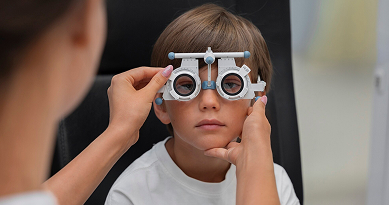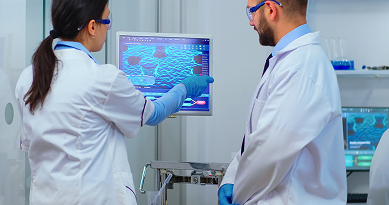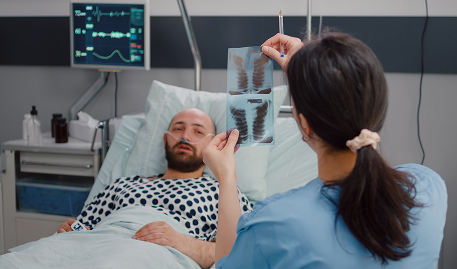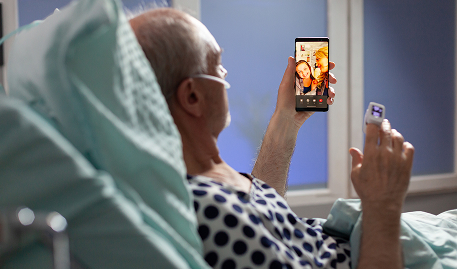Dynamisch Builds an AI-Powered Color Vision Solution for a Leading Healthcare Provider
Client Challenge
A leading color vision solution provider needed modern visual assessment tools. Even if Ishihara plates are popularly used for color vision screening, such static tools present significant limitations in modern clinical settings such as:
Static and Inflexible:
Manually designed plates are fixed, lacking the adaptability needed for diverse patient requirements or specific visual assessment goals beyond standard color vision screening.
Limited Customization:
Static plates cannot be easily modified to test different visual perception aspects (like contrast sensitivity) or adjusted for varying levels of difficulty.
Time-Intensive Creation:
Designing new, high-quality test plates manually is a slow process requiring specialized skills.
Scalability Issues:
High-volume clinics find printed, one-size-fits-all tests inefficient for broad screening or tailored assessments.
Lack of Dynamic Tools:
Clinicians lack tools to generate or modify test plates in real-time for immediate assessment needs.
Our client, a healthcare-focused organization, required a digital solution to rapidly generate custom visual test plates inspired by familiar formats (like Ishihara plates) but with the flexibility to assess aspects like contrast sensitivity, manageable by clinical staff without technical expertise.
Solutions Offered
Dynamic Contrast Sensitivity Test Plate Generator
We developed an innovative solution featuring an AI-powered generation engine and an intuitive web interface, designed to overcome the limitations of static visual test plates. This system empowers healthcare professionals to dynamically create, manage, and deploy customized contrast sensitivity tests presented in a familiar dot-pattern format.
1. AI-Driven Plate Generation Engine (Python)
The core is a Python engine using image processing algorithms to generate sophisticated test plates:

Customizable Embedded Content
Specify numbers, letters, or symbols to be embedded within the dot pattern.

Parametric Plate Design
Control visual characteristics like dot density, dot size, and color palettes for background and foreground elements.

Focus on Contrast Sensitivity
Instead of simulating color vision deficiencies, the engine precisely adjusts the luminance contrast between the embedded content and the surrounding dots. This allows for a controlled assessment of a user’s ability to discern shapes based purely on contrast differences, independent of color perception.

High-Resolution Output
Plates are generated as high-resolution images suitable for clinical screening environments, drawing design inspiration from established medical test plates but optimized for contrast assessment.

Simplified Trial Access
Streamlined access to nearby hospitals has made it easier for patients to participate in clinical trials.

Seamless Data Integration
Integration with external systems ensures access to the most current and relevant data.
2. Interactive User Dashboard (Web Interface)
A user-friendly web dashboard allows non-technical staff to operate the system effortlessly:

Intuitive Parameter Input
Simple controls (forms, sliders, dropdowns) allow users to configure embedded content, dot patterns, colors, and crucially, the contrast level.
Real-Time Generation & Preview
Instantly generate and view the test plate based on the chosen parameters.

Efficient Image Management
Tools to easily Edit (adjust parameters and regenerate), Duplicate (create variations quickly), Delete, and Rename plates for clear organization (e.g., “Patient B – Low Contrast Symbol Test”).
3. Intelligent Storage and Retrieval System
A robust backend manages the generated plates and their configurations:
Metadata Association
Each plate is stored with details like creation date, parameters used (including contrast level), and embedded content type.

Search and Filtering
Quickly locate specific plates using keywords, dates, or configuration details.
Versioning
Track changes and maintain different versions of test plates over time.
Archival
Facilitates record-keeping, patient history review, and consistent re-testing.

Versioning
Track changes and maintain different versions of test plates over time.

Versioning
Track changes and maintain different versions of test plates over time.
The Results Speak For Themselves
Streamlined Operations and Enhanced Assessment Capabilities
The adoption of the Dynamic Contrast Sensitivity Test Plate Generator yielded significant improvements:
- Drastic Reduction in Custom Plate Creation Time: Generating a new, custom contrast test plate takes seconds, compared to the hours or days potentially required for manual design – an estimated 95% time saving for the creation process.
- High User Satisfaction: Clinical staff, including those without technical backgrounds, found the tool easy to use and effective for generating the test materials needed.
- Operational Independence: Clinics can create and manage their own specific contrast sensitivity test plates in-house, eliminating reliance on external designers or fixed sets.
- Real-Time Adaptability: Practitioners can instantly edit, duplicate, or create new plates, allowing for on-the-fly adjustments during patient assessments.
- Organized Digital Test Library: A structured library with metadata enables easy retrieval, tracking, and management of numerous test variants.


The Impact
Advancing Visual Assessment Flexibility
This project provides a powerful tool for creating customized visual assessment resources:
- Scalable Deployment: Easily generate and manage large numbers of unique test plates suitable for widespread use in clinics, hospitals, or research.
- Personalized Contrast Testing: Plates can be tailored with specific characters and precise contrast levels to match individual patient assessment needs or research protocols, enhancing the precision of contrast sensitivity screening.
- Cost Efficiency: Reduces costs associated with manual design and reliance on pre-printed, limited test sets.
- Proven Real-World Application: The tool is actively used, demonstrating its value in delivering more adaptive and specific visual assessments in clinical and educational settings.

